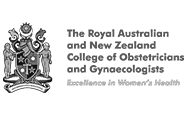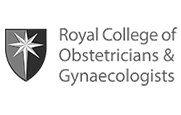Abnormal Cervical Screening Test (CST)
What is a Cervical Screening Test?
A Cervical Screening Test (CST) checks for the presence of high-risk Human Papilloma Virus (HPV) which can cause cervical cancer. In December 2017, CST replaced the Pap smear test which detected abnormal cervical cell changes that can lead to cervical cancer. CST is a more sensitive test as it can detect the presence of high-risk HPV before any abnormal cell changes occur. It also better predicts the risk as it specifically identifies the presence of high-risk HPV as opposed to low-risk HPV which only causes short-term minor changes.
When high risk HPV is identified in a CST, the cervical cells are examined in a similar manner to the previous Pap smear test, but in a liquid form called Liquid Based Cytology (LBC).
What causes an abnormal CST result?
A normal CST is when there is no high-risk HPV detected and is called a negative test. When high-risk HPV is identified it is reported as being positive. There are 200 types of HPV and only about 15 are classified as being high-risk as they are known to be capable of causing cervical cell changes that can lead to development of cervical cancer. High-risk HPVs are reported in 3 categories: 1) HPV 16, 2) HPV 18 and 3) HPV (not 16/18). HPV 16 and HPV 18 are responsible for around 70% of all cervical cancers. The cervical cancer vaccination does not provide protection again all the high-risk HPVs therefore it is important to know that even after receiving the vaccination, one should still have regular CST.
In the presence of a positive HPV test, it is important to also know the result of the LBC. The result of the LBC can be reported as negative when there are no abnormal cells or presence of either low-grade (LSIL) or high-grade abnormalities (HSIL). Low-grade abnormalities often go away without needing treatment whereas high-grade abnormalities require treatment as they can progress. Other abnormal cell changes are possible and individual results should be discussed with your treating doctor.
What is a colposcopy?
A colposcopy is a visual examination of the cervix with a microscope in the office and there are specific indications for this more detailed examination including the presence of high-grade abnormalities or presence of HPV 16 or HPV 18 irrespective of the LBC result. It involves a speculum examination to visualise the cervix and application of a dilute acetic acid (vinegar) to the cervix which turns areas with abnormal cells white. Visual characteristics of the abnormal area after application of acetic acid can indicate the degree of abnormality. A tiny biopsy or biopsies may be taken from the most affected area to be sent to the pathology lab for more accurate analysis. Taking a tissue sample for biopsy can cause mild pain or discomfort which is usually only short lasting. The site of biopsy can result in light bleeding and application of a silver nitrate stick over the site stops the minor bleeding. There can be some blood-stained vaginal discharge for a few days following a colposcopy and biopsy. One should avoid sex, tampon use, bathing and swimming for a week to allow the cervix to heal.
How are the abnormal cervical cells treated?
The most common method of treating the area with abnormal cells is to remove it with a wire loop excision called ‘large loop excision of transformation zone’ (LLETZ). The transformation zone is an area around the opening of the cervix where the abnormal cells develop. The same procedure is known as loop electrosurgical excision procedure (LEEP) in America. In this procedure, a semi-circular wire loop is used to remove a small portion of the cervix. It is common to have blood-stained discharge for 2 to 4 weeks following the procedure as the area heals. There can be some pelvic discomfort that should respond to anti-inflammatory pain killers such as Nurofen. After the procedure, one should avoid swimming, use of tampons and sexual intercourse for 4 weeks to minimise the chance of developing infection. The procedure is generally quite safe with only a small chance of complications. There is a 1% chance of developing an infection causing pelvic pain, fever and bleeding that would require antibiotic treatment.
At the follow up appointment, the pathology findings will be discussed. Treatment for abnormal CST is highly successful but close follow up is required thereafter.















